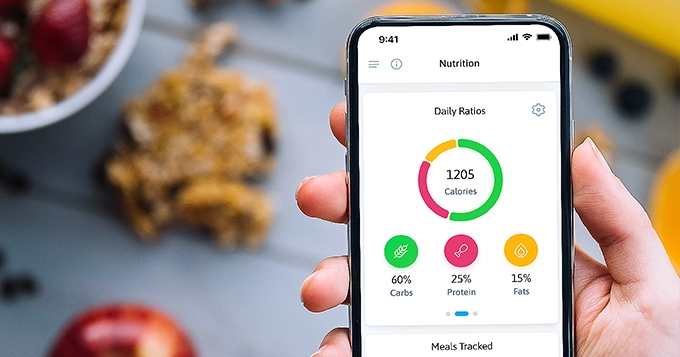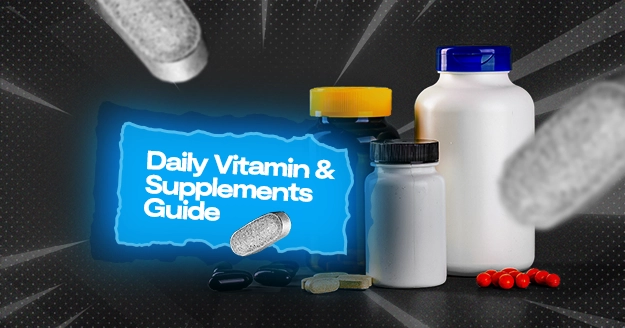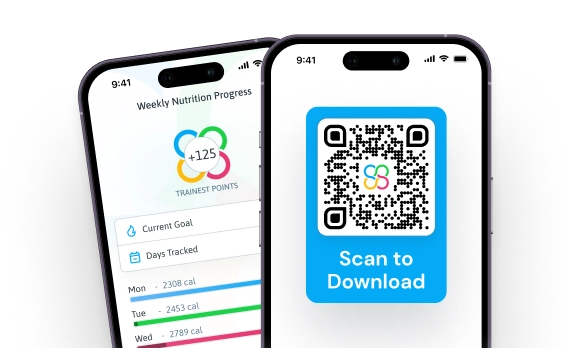Cutting is a period of time when you eat at a calorie deficit in order to lose body fat while keeping as much muscle mass as possible. While resistance training is still important during the cutting phase, you may not be able to lift weights with the same intensity as you can during the bulking phase.
Calculating your macro needs is important for cutting because you can use this as your basis for adjusting your macros to hit your target weight. This article will help you how to get started in the right way.
Before we tell you the secret of how to calculate macros for cutting with accuracy, know what macros are first.
Understanding Macros
Protein, carbohydrates, and fats are the three types of macronutrients you consume the most and provide you with energy. Each macronutrient is necessary for daily function and survival. Achieving the proper balance of all three is critical for maintaining muscle, burning fat, and staying healthy. In other words, your macronutrients are important in determining your body composition.
Fats. A consistent calorie deficit causes fat to be released from fat cells and converted into energy to fuel your body. As the process progresses, body fat stores are depleted, resulting in changes in body composition.
Carbohydrates. Reducing your intake of carbs when cutting automatically reduces your daily calorie intake. As a result, your body burns fat stored around your midsection for energy rather than the sugars it gets from carbohydrates.
Protein. A higher protein diet can increase lean mass while also promoting fat loss during a deficit.
How to Calculate Your Macros
Every body is unique but there’s always a formula that would suit your personal needs and goals. We’re here to help you answer the question, “How to calculate my macros?”
To calculate macros for cutting, you can do the following:
- Calculate your basal metabolic rate (BMR). It helps you determine how much energy your body uses at rest. Your age, sex, height, and weight are taken into account when calculating your BMR.
- Calculate your Total Daily Energy Expenditure (TDEE). Multiply your BMR by an activity factor to adjust your calories based on your activity level:
Sedentary (Little to no exercise)
BMR x 1.2
Light (exercises once to thrice a week)
BMR x 1.3
Moderate (exercises thrice to five times a week)
BMR x 1.55
Heavy (Hard exercise six to seven days a week)
BMR x 1.725
Extra active (If you have a highly physical job, do hard exercise 2 or more times per day, or train for a marathon, or triathlon)
BMR x 1.9
- Adjust your caloric goals for weight loss. Reduce your daily calorie intake by 15-25%.
One way to calculate your daily calories is by multiplying your body weight (pounds) by 14. Someone who needs 2,500 calories daily should take 2,500 calories to maintain their weight.
If you are someone who wants to lose weight, you might opt to subtract 500 from your maintenance calories.
Example: 2,500 – 500 = 2,000 daily calories to lose weight.
- Determine your macros.
Weight loss happens when you burn more calories than you consume. But in order to lose body fats and maintain muscle mass, you need to pay attention to where those calories are coming from and how they affect your body.
How does this work? You might be taking 500 lesser calories than your maintenance calories which is ideal for losing weight. But you might also be taking more carbohydrates than necessary and lesser protein which might make you feel hungry easily. Determining your macros ensures that your body still gets the nutrient it needs.
To determine how many grams of each macronutrient you need, multiply your total daily calories by 0.4 for protein and 0.3 for carbohydrates and fat. The protein and carbohydrate figures are then divided by four, while the fat figure is divided by nine.
Example macros computation of someone who consumes 2,000 calories daily.
Protein
2,000 x 0.4 = 800
800 / 4 = 200 grams of daily protein
Carbohydrates
2000 x 0.3 = 600
600 / 4 = 150 grams of daily carbs
Fats
2000 x 0.3 = 600
600 / 9 = 66.67 grams of daily fats
Lose Weight Through Keto Diet
Being on a ketogenic diet is one of the most popular diets for losing body fat while maintaining your muscle mass as much as possible. The ketogenic diet involves eating very few carbohydrates and replacing them with fat to help your body burn fat for energy. In summary, it’s a low-carb, high-fat diet.
How to calculate macros for keto.
Take out the guesswork and calculate keto macros using our simple guide.
Carb Needs
Each gram of carbs contains 4 calories. Research suggests a carb intake of 5% of your total daily calories. If you are in a lower calorie range (less than 2,000 calories a day), 20-25 grams of carbs per day is a good starting place. But if you find it hard to stick to that to that amount, you can start a little higher, at 50 grams.
Protein Needs
Each gram of protein contains 4 calories. Higher protein intake may support better appetite control and a lower body fat percentage without messing with ketosis.
Based on your goal and activity level, you can use the following recommendations:
Maintain/sedentary (Little to no exercise):
0.6g/pound of body weight per day
Fat loss/moderately active (Moderate exercise 2 or more days per week):
0.9g/pound of body weight per day
Gain muscle/very active (Hard exercise 3 or more days per week):
1.1g/pound of body weight per day
Fat Needs
Your fat needs when doing a keto diet can be calculated based on your remaining calories. Each gram of fat contains roughly nine calories.
It looks like this:
Remaining calories / 9 = grams of daily fats
To calculate keto macros, simply divide the calories from each macro by your daily calorie needs and multiply by 100% to calculate your macros as a percentage.
For instance, (80/1800) x 100% = 5% of calories from carbohydrates. (600/1800) x 100% = 33% protein calories.
There are different types of keto diets:
- The standard ketogenic diet is a low carbohydrate, moderate protein, and high-fat diet. It is typically composed of 70% fat, 20% protein, and 10% carbohydrates.
- The cyclical ketogenic diet consists of 5 ketogenic days followed by 2 high carb days.
- The targeted ketogenic diet allows you to eat carbohydrates in between workouts.
- To calculate keto macros for a high-protein ketogenic diet, know that it is similar to the standard ketogenic diet, but it contains more protein. Typically, the ratio is 60% fat, 35% protein, and 5% carbohydrates.
Tips for Achieving Macro Goals
Your body is unique on its own. So, pay attention to how your body reacts to your current diet, and adjust your routine as you see fit. But to see how you are progressing, it’s recommended that you track your macros.
However, a beginner might find it overwhelming to track every food they eat and search for its macronutrient info. This can result in a lack of motivation and eventually falling out of your routine. The most convenient way to track macros is through a nutrition app.
Here are a few things you can do with the Nutrition Feature of the Trainest App.
- Calorie and macro goals. Set your daily caloric and macro goals and keep track of your food consumption.
- Meal log-ins. Log your meals manually or by scanning the barcode of your food items and automatically update your calorie left for the day.
- Food library. Searching on the web for the macronutrient info of the food you eat where you have to evaluate over a thousand results and look for the most reliable source can be tiresome. So, Trainest ensures that you can track your macros with accuracy through the vast food library.
- Nutrition report. View your eating habits and make better health decisions by having access to your comprehensive nutrition report. See how you’re progressing and easily adjust your macros as needed.
Find out what else you can do with the Trainest App.
Tracking your macros consistently and staying committed to your routine and diet can be your ticket to a fast track to success. You can find patterns and identify the things that do and don’t work, making it easier to modify what you’re doing to best suit your desired outcome.
Conclusion
To make the most out of your routine, ensure you understand the roles of each macro in your body and stay consistent in tracking your nutrition. There is a lot of trial and error involved when you calculate your macros for cutting. But your journey to maximizing fat loss while maintaining muscle mass doesn’t need to be complicated.
Simplify your fitness journey by downloading the Trainest app for free today.









